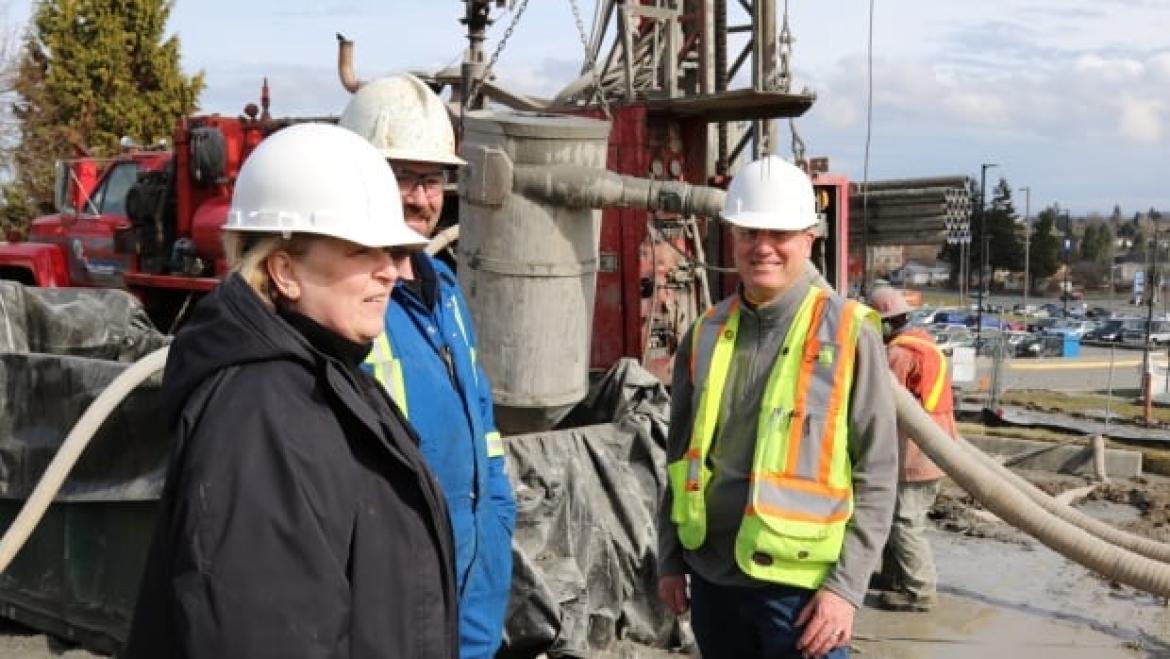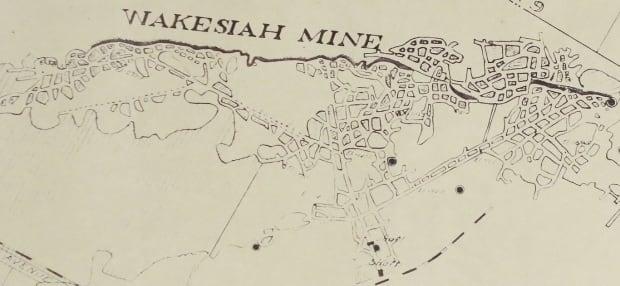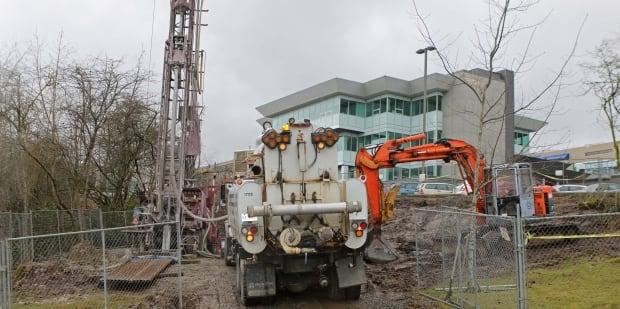
Flooded mine shafts under Nanaimo university campus to be used for heat exchange
February 20, 2018 - 2:15pm
By Deborah Wilson, CBC News Posted: Jan 21, 2018 11:00 AM PT Last Updated: Jan 21, 2018 11:00 AM PT
University officials and Falcon Engineering geo-exchange engineer Jeff Quibell, right, view progress on the project, which has attracted interest from as far as Scotland. (VIU)
Salt water from the flooded shafts of the Wakesiah mine, which run 135 to 180 metres beneath the Vancouver Island University campus, will be pumped to the surface to extract warmth in a geo-exchange project that has attracted international interest.
"We're going to…push it in through a heat exchanger and send it back down into the mine." Alan Cumbers, associate vice-president of facilities and ancillary services for VIU, told On the Island host Gregor Craigie.
Cumbers said the Wakesiah mine operated from 1918 to 1930. It's one of dozens of coal mines that operated around the port city from the late 1800s, with the last one closing in 1986.
The geo-exchange system, which is expected to be operational within the next few months, will heat and cool about 20 per cent of the buildings on campus, including the new health and science building.
Unlike geothermal energy, which extracts heat as hot water or steam from deep in the earth's core, the geo-exchange process pumps water from much shallower depths.

The flooded shafts of Nanaimo's old Wakesiah mine, which operated from 1918 to 1930, run 135 to 180 metres beneath the Vancouver Island University campus. (VIU)
Cumbers said because the temperature of the brackish water in the mine shafts sits at a constant 11 degrees year-round, it's possible to use it for both heating and cooling.
The idea is not a new one, though Cumbers said it has not been widely piloted.
Large studies were done in the mid 1990s, he said. "It was definitely explored and deemed viable at that time."

Drilling at the Vancouver Island University campus in Nanaimo is part of the work involved to build a geo-exchange system that will pump water up from the abandoned Wakesiah mine shafts to to heat or cool the new health and science building. (VIU)
The $2.4-million project, which received federal and provincial funding, is expected to pay for itself in about 18 years. It will replace natural gas and electrical heating systems currently in use, and save 320 tonnes of carbon dioxide emissions in its first, proof-of-concept phase, he said.
Cumbers said the university hopes a demonstration pump house will inspire students and staff to find new uses for old coal mines.
Meanwhile the project has attracted international interest from other regions where abandoned coal mines remain an untapped resource.
"We've had interest from Scotland, we've had interest from other areas," he said.
With files from CBC Radio One's On the Island.
Tags: In the Community






